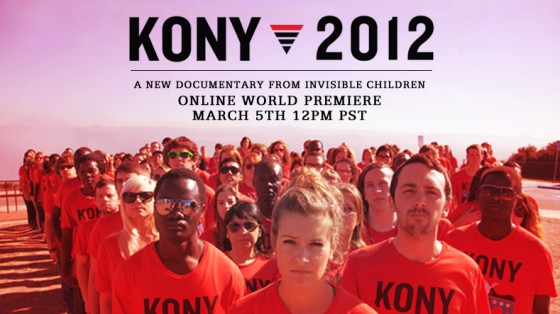 Kony2012 exploded just as I was leaving for overseas so I didn’t get a chance to post about it. Now that I’m back, it’s largely died off. Still, there are a few things that are important to discuss specifically now that attention has died off. And there are important parallels to the conflict minerals (ie. blood iPhones) in the Congo — another case that was “in the media” a few years ago and has now died off.
Kony2012 exploded just as I was leaving for overseas so I didn’t get a chance to post about it. Now that I’m back, it’s largely died off. Still, there are a few things that are important to discuss specifically now that attention has died off. And there are important parallels to the conflict minerals (ie. blood iPhones) in the Congo — another case that was “in the media” a few years ago and has now died off.
In late 2008, I first found out about the conflict mineral narrative (to deliberately put it simplistically, that your electronic gadgets are responsible for genocide in the Congo). See these two posts. At the time, it wasn’t particularly mainstream and I was trying to spread awareness and so on. I then became interested in the Enough Project and in early 2010 I posted again, this time specifically to promote their call to action. At the time, there were numerous initiatives including the Conflict Minerals Trade Act which was then being debated in the US Congress (signed into law on Jul 21 2010 as part of a different act)
I’ve now become aware of a large number of problems with the conflict minerals narrative as it’s been presented in the international media. One of the good things about the Kony2012 kerfuffle is that it (ironically) made people more aware of the potential problems with “awareness” campaigns — as well as fauxtivism, simplistic narratives, the Whites in Shining Armor complex, the unintended consequences of popular aid actions and so on. As part of that, it’s important to be able to cast a similar glance at the conflict minerals story, especially since the problems with it appear to be similar to Kony2012 (although not as severe). It’s also important as a kind-of correction.

Camera+ recipe?
? scene: Clarity
? effect: Magic Hour (61%)
In both cases, western-based groups advocate for particular solutions to horrible things that are happening in “Africa” (a country that lives on in the imagination of many people despite the existence of actual information about the diversity within the continent). Both solutions are based on their specific organisational focus and are not entirely in line with expert opinion on what should be done (more tenuous in the case of conflict minerals, more obvious with Kony2012). Furthermore, both groups do not take adequate steps to involve people from the countries they are aiming to help in the strategic process. Both group take their case to the public, marketing and promoting it using a certain narrative. The narrative grows popular (for conflict minerals it was several orders of magnitude less than Kony2012). This involves great multitudes not only becoming aware of the problem but implicitly buying into the specific narratives and solutions that are being offered — for better or for worse.
Now, in the case of conflict minerals, the “popular” solution was indeed executed. At least partially. However, it’s now reasonable to believe based on the evidence that the popular solution was based on serious misconceptions and that implementing it has made things worse. Via Texas in Africa (a blog with a lot of resources critical of fauxtivism about “Africa”, including conflict minerals), comes this disturbing peer-reviewed paper:
DANGEROUS TALES: DOMINANT NARRATIVES ON THE CONGO AND THEIR UNINTENDED CONSEQUENCES.
Abstract: Explanations for the persistence of violence in the eastern part of the Democratic Republic of Congo blame the incendiary actions of domestic and regional leaders, as well as the inefficacy of international peace-building efforts. Based on several years of ethnographic research, this article adds another piece to the puzzle, emphasizing the perverse consequences of well-meaning international efforts. I argue that three narratives dominate the public discourse on Congo and eclipse the numerous alternative framings of the situation. These narratives focus on a primary cause of violence, illegal exploitation of mineral resources; a main consequence, sexual abuse of women and girls; and a central solution, extending state authority. I elucidate why simple narratives are necessary for policy makers, journalists, advocacy groups, and practitioners on the ground, especially those involved in the Congo. I then consider each narrative in turn and explain how they achieved prominence: they provided straightforward explanations for the violence, suggested feasible solutions to it, and resonated with foreign audiences. I demonstrate that the focus on these narratives and on the solutions they recommended has led to results that clash with their intended purposes, notably an increase in human rights violations.
Some sobering stuff — and I strongly suggest you read it before proclaiming any opinion on conflict minerals. It also highlights the importance of doing a lot of research before promoting, contributing to and advocating for particular solutions. Especially to problems that are horrible, since their emotional weight makes it all the easier to turn off the critical thinking faculty. (Something I’m pretty sure happened to me as well.) All of this was particularly easy to see with Kony2012, but the conflict minerals example shows that usually these issues are a lot more subtly. You have to specifically look for them.
The other important factor is is lack of follow-up. Both stories have peaked so people just forget them. Perhaps this is the biggest problem. When activism goes bad and makes things worse, the nature of news consumption (as well as the self-congratulatory streak we all have) stops us from finding out and reevaluating.
In the interest of follow-up, there’s been development on both stories just in the last 2 days. Just today, a top LRA member has been captured by the Ugandan army. In the Congo, new fighting erupts as a Rwanda-supported militia integrated into the Congolese army have defected.





0 Comments